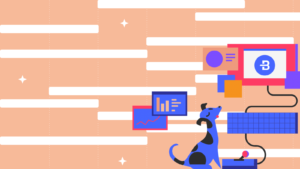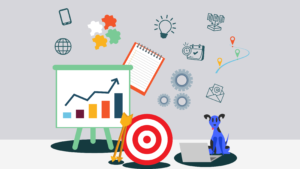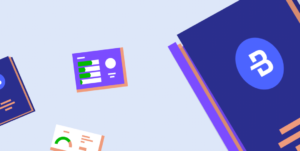As a customer success professional operating across any software vertical, not being able to clearly demonstrate value quickly can hurt your chances of an effective implementation.
Today, managing a software implementation from end-to-end is overly complicated and lacks clear standards and defined operating procedures around two core processes:
- Task management
- Workflow automation
To solve this complexity, it’s important to understand how customer expectations are changing.
As operators and leaders in the success world, and to understand what’s happening in the future and ensure value is delivered, we must look to the past to help inform proposed solutions.
Below, we’ll uncover how the evolution of SaaS impacts success, and how you can take action.
To predict the future, start by studying the past
Looking back nearly 15 years ago, most software deals were license and maintenance-based.
Across the board, these software solutions enabled companies to improve three functions:
- Productivity
- Efficiency
- Output
Despite the successful outcomes based on the deployment of these tools, smaller, fast-growing companies simply couldn’t afford the license structures. To distill this point even further, the ownership and maintenance of software were just too high for early-stage teams to afford.
However, over the past decade, the rise of SaaS completely broke open new markets.
Why? Because SaaS pricing models enabled B2B companies to sell directly to individual users at an organization, rather than selling to corporations through an annual licensing structure.
How the evolution of SaaS impacts customer success
Within the customer success ecosystem specifically, the rise of SaaS increased the surface area of where and when software could be applied to add leverage across business functions.
Now, moving past the rise of novel SaaS pricing structures, let’s zoom into the proliferation of tooling options. If you rewind the clock to the turn of the century, every division within a company – marketing, sales, finance, ops – each used software from one leading SaaS tool.
To put it bluntly, there was a clear category winner for each distinct SaaS business vertical.
However, only a few years later in 2010, there were 3 to 5 SaaS competitors servicing the exact same business function. Finally, fast-forwarding to the present day, an average business unit has hundreds, if not more, SaaS competitors attempting to solve the same customer problem.
And, when competition ramps up, the cost to acquire customers in each sector follows suit.
The outsized importance of customer success
As costs to acquire customers continue to increase, every B2B user that signs a contract becomes more and more valuable. As a result, the delivery mechanism to capture value from each customer, across both small and large companies, has gone up in quick succession.
To add fuel to this competitive dynamic, venture funding has flowed at a faster and faster clip into the SaaS ecosystem with an intent to capture compounding market opportunities.
From our lens at Baton, the fact that every SaaS customer has become more valuable signals an increased need to pay close attention to customer success. More specifically, when a customer is onboarded but the implementation yields a poor experience, the user will churn and that price to acquire that customer in the first place will be thrown out the window as a sunk cost.
In the years to come, customer success managers and implementation owners at high-growth SaaS companies will become increasingly vital to the long-term success of any company.
Shifting to a consumption-based monetization model
We believe the next phase of SaaS monetization will shift to a consumption model.
More specifically, consumption models revolve around customers paying per unit of value that they receive from using the software in question. At Baton, we follow this consumption-based pricing model by charging based on the number of customer projects that are live.
Critically, we don’t get paid unless our own customers use the Baton product more.
As a result, we’ve been able to get more aligned with our end customers because they have to see clear, quantitative value being driven by Baton.
Tracking the evolution of the SaaS delivery model over the past decade, the best companies have consistently outperformed their competitors because they align their products with what their end customers value most. To get a quick snapshot of these leaders, examples include:
- Slack
- Stripe
- GitLab
- Benchling
In simpler terms, a company’s “unit of value” needs to clearly match what they charge.
We believe the dominant SaaS companies rapidly expanding into new verticals will shift to this exact model of consumption, primarily because it forces teams to drive immense value.
As success and implementation professionals at Baton, our job is to arm both ourselves and our community with systems, tools, strategies, and processes to best align with this future state.
Peering into the future with Baton
Ultimately, our founding goal at Baton is to accelerate time to value by deploying an entirely new approach to managing software implementations from start to finish.
Since launching Baton, we’ve been fortunate to work with customers like Lane, Mark43, and Mantl to provide real-time visibility into every aspect of the customer onboarding process.
As the SaaS ecosystem continues to evolve, it’s our job to support customer success leaders in their ongoing work to deliver effective, efficient implementations and accelerate user adoption.



